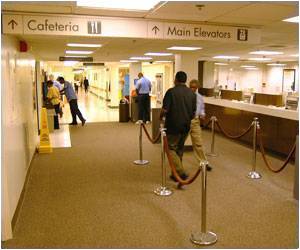A new study has found a link between the annual human pilgrimages and the spread of antibiotic-resistance to one of the most pristine locations in Asia

"This isn't a local problem – it's a global one," explains Professor David Graham, an environmental engineer based at Newcastle University who has spent over ten years studying the environmental transmission of antibiotic resistance around the world." We studied pilgrimage areas because we suspected such locations would provide new information about resistance transmission via the environment. And it has – temporary visitors from outside the region overload local waste handling systems, which seasonally reduces water quality at the normally pristine sites." The specific resistance gene we studied, called blaNDM-1, causes extreme multi-resistance in many bacteria, therefore we must understand how this gene spreads in the environment.
"If we can stem the spread of such antibiotic resistant genes locally – possibly through improved sanitation and waste treatment - we have a better chance of limiting their spread on larger scales, creating global solutions by solving local problems." Funded by the Engineering and Physical Sciences Research Council (EPSRC), the aim of the research was to understand how antibiotic resistance was transmitted due to a specific human activity. Local "hot-spots" of antibiotic resistance exist around the world, particularly densely-populated regions with inconsistent sanitation and poor water quality. By comparing water quality of the Upper Ganges in February and again in June, the team showed that levels of blaNDM-1 were 20 times higher per capita during the pilgrimage season than at other times.
Monitoring levels of other contaminants in the water, the team showed that overloading of waste treatment facilities was likely to blame and that in many cases, untreated sewage was going straight into the river where the pilgrims bathe. "The bugs and their genes are carried in people's guts," explains Professor Graham. "If untreated wastes get into the water supply, resistance potential in the wastes can pass to the next person and spiralling increases in resistance can occur." Worldwide, concern is growing over the threat from bacteria that are resistant to the so-called "last resort" class of antibiotics known as Carbapenems, especially if resistance is acquired by aggressive pathogens.
Of particular concern is NDM-1, which is a protein that confers resistance in a range of bacteria. NDM-1 was first identified in New Delhi and coded by the resistant gene blaNDM-1. Until recently, strains that carry blaNDM-1 were only found in clinical settings, but in 2008, blaNDM-1 positive strains were found in surface waters in Delhi. Since then, blaNDM-1 has been found elsewhere in the world, including new variants. There are currently few antibiotics to combat bacteria that are resistant to Carbapenems and worldwide spread of blaNDM-1 is a growing concern. Professor Graham, who is based in the School of Civil Engineering and Geosciences at Newcastle University, UK, said the team had planned to repeat their experiments last year, but the region was hit by massive floods in June and the experiments were abandoned. The team has since returned to Rishikesh and Haridwar and hope their work will prompt public action to improve local sanitation, protecting these socially important sites.
On a global scale, they want policymakers to recognise the importance of clean drinking water in our fight against antibiotic resistance. "What humans have done by excess use of antibiotics is accelerate the rate of evolution, creating a world of resistant strains that never existed before" explains Graham.
Advertisement
Advertisement








